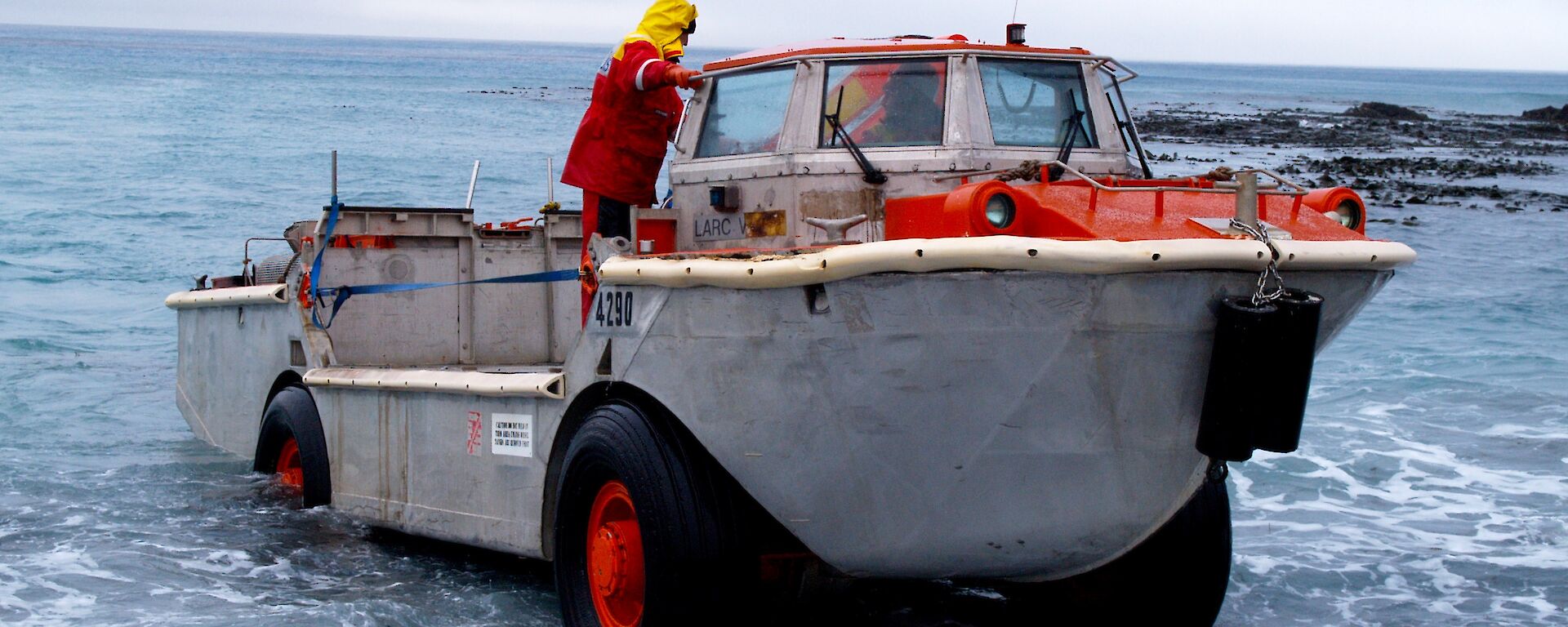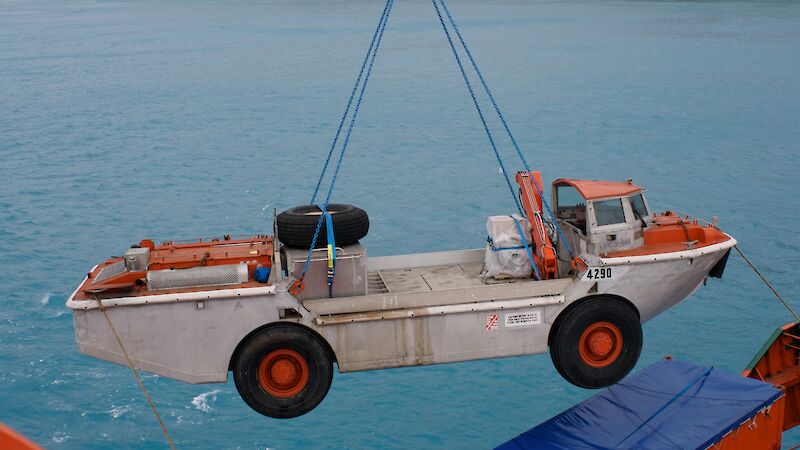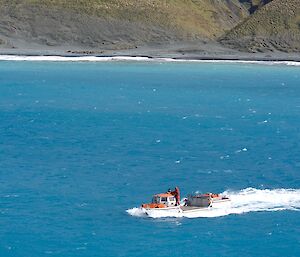The LARC is an ideal all-terrain vehicle. Its design allows for the transition from water to land, or reverse, to be done on a range of shorelines, often needing little or no preparation.
Jet barges are unable to get close to shore in rough seas, a critical issue, particularly on Macquarie Island. The LARC, however, can make surf landings in all types of weather.
Large balloon tyres provide suspension and also aid in flotation. A HIABB crane is fitted to each craft. This is positioned aft of the operator’s cabin.
In the past, the AAD used these multipurpose vessels for the resupply of its bases in Antarctica, Macquarie Island and Heard Island. Today, LARCs are mostly used in the resupply of Macquarie Island and for operations conducted at Heard Island.
For many years the LARCs were supplied and operated by the Australian Army on behalf of the AAD. The Australian Army transferred eight surplus vehicles to the AAD in 2008.
History of the LARC
3 basic models of the LARC were developed from 1952 to 1959. The AAD uses the LARC-V, which was designed in 1959. The LARC-V went into production in 1963, with a total of 950 being manufactured.
LARCs were first used by the AAD at Macquarie Island in the Summer of 1970–71. They were operated for the AAD by the Army (10th Terminal Regiment). From the 1970s until 1994, the LARC was part of every expeditioner’s Antarctic experience.
The LARC is a versatile and very seaworthy design. LARCs have twice circumnavigated Macquarie Island, first in 1976–77 taking 18 hours, and the second in 1993 taking 11 hours. The LARC played a key role in evacuating passengers and crew from the Nella Dan in very hazardous conditions, after she was driven ashore at Buckles Bay, Macquarie Island in 1984. LARCs were also used at Heard Island in 2005.
At over 35 years old the AAD’s LARCs are basically historic machines. Some 600 LARCs were disposed of during the US withdrawal of Vietnam by sinking them at sea. The fact they are no longer in production makes fully operational examples rare. However, this goes to show how well adapted and enduring the design is for sub-Antarctic ship to shore operations.
Precautions for working in the vicinity of LARCs
Do
- Always wear a lifejacket when getting on, off or travelling on a LARC.
- When alongside a ship, step onto and off the LARC when it is at its highest point (top of the swell).
- Always obey the instructions of the LARC operator.
- Keep a firm grip of the passenger line when onboard.
- Assist others where needed.
Don’t
- Board or disembark when someone else is on the ladder.
- Disembark until told to do so.
- Jump off.
- Disrupt the view or access of the operators.
Operational guidelines for people working in the vicinity of LARCs:
Do
- Work with the LARC as directed by the operators.
- Be careful of the HIABB crane when in operation.
- Give LARCs the right of way at all times.
- Keep well clear of LARCs on land as the driver has limited visibility.
Don’t
- Stand under loads.
- Distract the attention of the operators from the job at hand.




